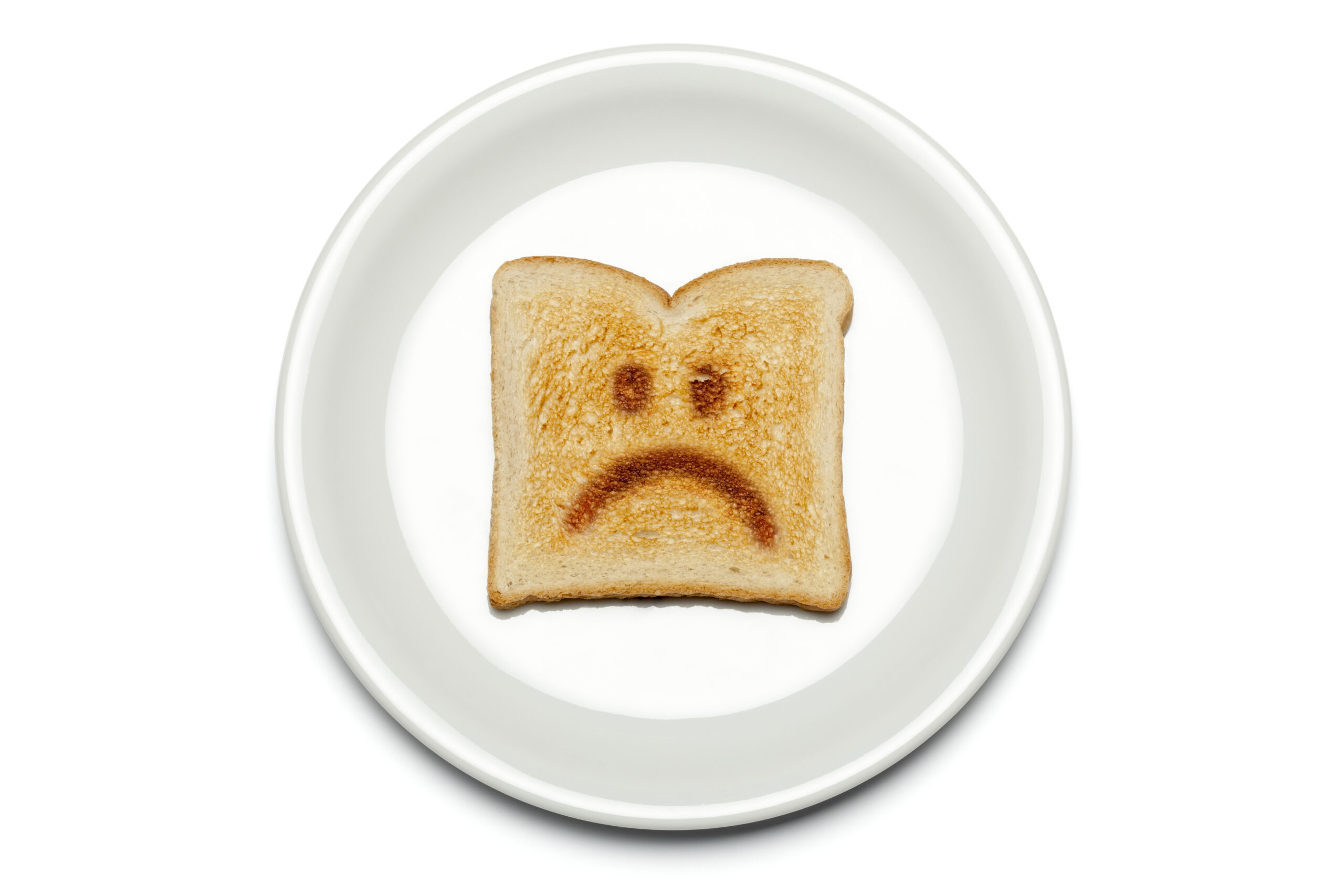A clinical overview of the causes, diagnosis and management of coeliac disease
Coeliac disease (CD) is a serious illness that affects both adults and children. It is an autoimmune condition where the body’s immune system attacks its own tissue when gluten is eaten. This reaction then causes chronic inflammation and damage to the lining of the small intestine, which can then prevent vital nutrients in food from being absorbed. The deficiencies caused as a result of this aggressive process can lead to a variety of symptoms, ranging from mild discomfort to, if left undiagnosed, serious health problems, specifically in the digestive system, as well as the rest of the body.
Clearly stated, that whilst common, coeliac disease is not an allergy or a food intolerance; it is a serious, chronic condition. Indeed, many people living with the condition feel that is some ways, the seriousness of their condition is somewhat trivialised these days as they become (wrongly) grouped with many people who make the modern lifestyle choice to go ‘gluten-free’. Whilst there is no ‘cure’ for CD as such, the key to the long-term successful management of living a full and active life with coeliac disease is a strict adherence to NO gluten — so, ‘gluten-free’ is a necessity, not a choice.
As is the case with many chronic conditions, early diagnosis, acceptance, and strict dietary change are vital to minimising the impact of the disease, both to a person’s health and daily living. In this article, we will give a comprehensive overview of the condition, looking at symptoms, causes and then diagnosis and treatment, along with self-help and advice, to help people help themselves to manage their condition for maximum improvement.
In terms of prevalence, it is estimated that perhaps as high as at least one-in-100 people in Ireland are affected by CD. Expert opinion indicates, however, that this figure may be underestimated by up to 30 per cent, as people with milder symptoms go undiagnosed or in many cases, are misdiagnosed with another condition which presents symptoms similar to those in CD.
Taking gender into account, CD typically indicates a ratio of 3:1 female-to-male, so it is more common in women.
Those with particular conditions, ie, type 1 diabetes, Down syndrome, Turner’s syndrome and autoimmune thyroid disease carry an increased risk of developing CD. Whilst CD can develop at any time of life, symptoms are most likely to appear either in:
- Early infancy – between eight-to-12 months old, although it may take some considerable time to achieve a correct diagnosis;
- Or more commonly, later in life, in the 40-to-60 year-old range.
There is strong evidence of a genetic link to developing CD, so, first-degree relatives of an individual with CD also carry a higher risk, perhaps 10 per cent, of having coeliac disease, although taking the ‘glass half-full’ view, this means that potentially 90 per cent of family groups will remain unaffected.
What causes CD
The etymology of coeliac (pronounced ‘see-lee-yak’) from the Latin coeliacus — ‘pertaining to the cavity of the abdomen’ — gives us some direct understanding of the area of the body directly affected by CD. Why people develop CD is as yet unknown. CD is caused by an adverse immune system reaction to the dietary protein gluten, which is found in three types of cereal:
- Barley.
- Rye.
- Wheat.
For those with CD, gluten plays a role in preventing absorption of vital nutrients such as vitamin D and calcium. In normal function, the immune system produces antibodies to help the body fight harmful threats such as bacteria and viruses; however, with CD, an autoimmune condition, the immune system mistakes one of the constituent substances of gluten (gliadin) as a threat to the body, producing antibodies to attack it. As a result of this erroneous attack, the surface of the intestine becomes inflamed (red and distended).
In a normal intestine, the surface is covered by millions of tiny finger-shaped growths called villi, their function being to increase the overall surface area of the intestine to aid more effective food digestion. With CD, the damage and inflammation to the intestinal lining because of the adverse immune reaction flattens the villi, significantly reducing their ability to function as a digestive aid. As a consequence, the gut is unable to digest the nutrients from food, thereby triggering a variety of symptoms of CD.
In severe cases of CD, where the digestive system has broken down considerably, malnutrition caused by a critical lack of vital nutrients is a potential danger. Malnutrition can result in loss of function in other parts of the body and diminishes the body’s ability to recover from wounds or infection. Other severe symptoms may include muscle wastage, mental confusion, and an inability to stay warm.
You will find gluten in nearly all common everyday foods that are cereal-based (bread, breakfast cereals, pasta, gravy, and sauces (flour), cakes, processed meals), so you can see, if someone has undiagnosed CD, how continued consumption of gluten can lead to potentially severe health problems.
Symptoms
Whether diagnosed or undiagnosed and untreated, symptoms of CD can vary widely from person-to-person.
For some, symptoms may only be mild and perhaps occasional, whilst for others, they may be persistent and severe; the reason for this variance is not known. In some cases, particularly with family groups, CD may be latent, not having been triggered. With CD, because the body is unable to absorb nutrients fully (malabsorption), the most common symptom of CD is diarrhoea that is often severe and foul-smelling.
This symptom is often misdiagnosed or presumed by the sufferer to be irritable bowel syndrome (IBS).
Other common symptoms may include:
- Constipation.
- Excessive wind/flatulence.
- Persistent or unexplained gastrointestinal symptoms, such as nausea and vomiting.
- Recurring stomach pain, cramping or bloating.Extreme tiredness:
- Iron, vitamin B12 or folic acid deficiency.
- Anaemia.
- Sudden or unexpected weight loss (but not in all cases).
- Mouth ulcers.
- Itchy skin rash (dermatitis herpetiformis, see below).
- Neurological (nerve) problems such as ataxia (loss of co-ordination, poor balance) and peripheral neuropathy (numbness and tingling in the hands and feet).
Dermatitis herpetiformis
Whilst not a direct symptom of CD, but also gluten-related, up to 20 per cent of people with CD may also develop an itchy skin rash — dermatitis herpetiformis. The rash presents as red raised patches with blisters that burst when scratched. Most commonly affecting the elbows, shoulders, knees, buttocks, and face, it can however, appear anywhere on the body. It can appear at any age, but is most common in those in their 50s and 60s.
For most, it should clear-up once a gluten-free regimen is established. For those where the rash is more belligerent, the drug Dapsone can be prescribed and has proved successful in helping to clear the condition.
For many, experiencing one or more of the symptoms above may not lead them to think of CD, often attributing some of them to stress or age or just a consequence of modern living. Due to the nature of CD and as outlined earlier, the sooner CD is diagnosed, to higher the chance of catching it early and minimising any long-term health risk. This is something to be aware of when patients present with any of the symptoms above at the counter.
Diagnosis
With many of the symptoms of CD being common to other conditions, people may not necessarily think of CD as the cause. People may go for considerable periods of time treating conditions such as constipation, indigestion, bloating, etc, as stand-alone issues, perhaps using readily available over-the-counter medications to treat a single condition. As stressed earlier, given the vital role early successful diagnosis of CD can have on the long-term healthy prognosis for a patient, it is important that, especially with a condition that has persisted despite OTC treatment, CD is considered at the pharmacy counter and a GP visit is suggested.
Once at the GP, the doctor will discuss the patient’s medical history and their symptoms in great detail. Based on that discussion, if the GP believes that CD might be the cause, they will order a blood test in the first instance to test for antibodies usually found in blood from those with CD. The doctor will advise the patient that prior to the test, they maintain their current regular diet, which should include gluten, to ensure the accuracy of the result. This should continue until a diagnosis of CD is confirmed.
If CD antibodies are present in the blood sample, the GP will refer the patient to a consultant gastroenterologist for a biopsy of the intestines. In some cases, where no antibodies are present in the blood sample, but symptoms continue, the GP might still refer for biopsy. The biopsy will be carried out at a hospital using an endoscope to retrieve small samples of the lining of the small intestine. The samples will be examined for indications of CD.
If a diagnosis of CD is confirmed, the GP may initiate further tests to help assess the extent to which CD has affected the patient, remembering that in some cases, CD may have been undiagnosed for years. These tests may include blood tests to check iron and vitamin levels in the blood, specifically checking for anaemia that may be present due to deficient digestion.
A DEXA scan may also be ordered if the GP has concerns that CD may have already started to thin the bones or almost certainly for those with existing osteoporosis prior to CD diagnosis.
Treatment
From a medical perspective, the GP may require the patient to attend an annual check-up. This may not be much more than a discussion on progress, together with perhaps height and weight check. This relates to full absorption of calories and also any height loss related to potential osteoporosis concerns. Depending on the situation, the GP may also recommend supplements such a calcium and vitamin D, particularly in the months following diagnosis.
The simplest and most effective treatment for CD is excluding foods that contain gluten for life. With the immediate removal of gluten from the diet, the gut will begin to heal quickly, and the patient will see an improvement in health within a short period of time. Depending on the extent of the damage prior to diagnosis, it may take months or even years for the intestine to heal fully.
On the face of it, excluding gluten may sound relatively simple; however, for many, it is a daunting task. The new regimen of checking everything, food labels, menus, etc, can prove extremely challenging. Even the smallest amount of gluten can result in the return of previous debilitating symptoms. Most GP practices either have a resident dietitian or access to a local dietitian to whom they refer patients. In the early stages, it is vital that the newly-diagnosed patient consults with a dietary professional.
With CD, the damage and inflammation to the intestinal lining because of the adverse immune reaction flattens the villi
They will be an invaluable source of help and support in the early days, helping the patient to establish a healthy, balanced, gluten-free diet. Unlike the austere and extremely limited gluten-free world of 20 or 30 years ago, there is a huge selection of gluten-free products now available in all the major supermarkets and food outlets. In addition, there are many local and online supports available.
Some of the major organisations, ie, Coeliac Ireland, produce and maintain extensive lists of gluten-free products, which are updated regularly. These will become an integral part of the patient’s dietary management.
Foods that can be eaten that are naturally gluten free include:
- Fruit and vegetables.
- Meat and fish (avoiding processed where possible).
- Rice and rice derivatives.
- Most dairy products.
- Potatoes.
- Gluten-free flours.
Another food choice available to a coeliac is oats. Oats do not contain gluten, however, many coeliacs avoid oats as they can be cross-contaminated with other cereals. The active protein in oats is avenin, which is suitable for most coeliacs. It is advisable not to include oats in the diet for a period of six months to a year from diagnosis and then introduce gradually, choosing only oats that are clearly marked ‘gluten free’.
Outlook
With early diagnosis and adherence to a gluten-free diet, CD can be managed effectively, with virtually no limitations to enjoying a healthy lifestyle for those living with the condition. There is a much higher level of awareness of CD throughout society and access to support channels has never been greater.
Depending on the extent of the damage prior to diagnosis, it may take months or even years for the intestine to heal fully
Being at the frontline in community healthcare, pharmacy should take the lead in being seen as the local ‘go-to’ resource by getting involved with local coeliac groups, perhaps running or hosting events that help build awareness of the condition to the wider public. With so many CD cases undiagnosed, a higher pharmacy profile may encourage more people to take the step to early diagnosis. Prevention IS better than cure.
Disclaimer: Brands mentioned in this article are meant as examples only and not meant as preference to other brands.
Written by Eamonn Brady MPSI (Pharmacist). Whelehans Pharmacies, 38 Pearse St and Clonmore, Mullingar. Tel 04493 34591 (Pearse St) or 04493 10266 (Clonmore). www.whelehans.inet. Eamonn specialises in the supply
of medicines and training needs of nursing homes throughout Ireland.
Email ebrady@whelehans.ie







